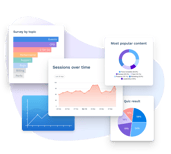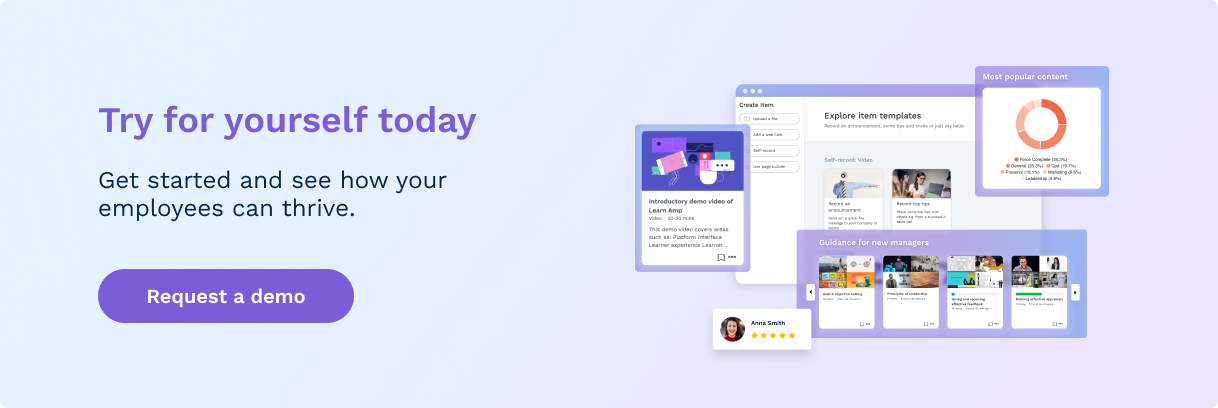CIOs and CTOs are keen to consolidate their systems. At the same time, they want to make sure that they have the best tools and processes for each business function. Both all-in-one, single-vendor ERP systems and mix-and-match, best-of-breed strategies have their pros and cons. But a best-of-breed suite can offer the best of both worlds.
In the modern hybrid workplace, it’s more important than ever that your tech stack can handle all your business processes—from HR and IT to Finance and L&D—while delivering and facilitating high-quality performance across the board. And there are a lot of tech solutions aiming to deliver that—from all-in-one Enterprise Resource Planning (ERP) systems to specialised software for specific functions. But what is the best option for your business?
For a CIO or CTO wanting to simplify and avoid complexity, ERP software might seem the logical solution—keeping everything neat and tidy under the one roof. However, a Gartner survey found that just 29% of businesses preferred all-in-one systems1. More and more CIOs are taking a mix-and-match approach, choosing the best HR, L&D, messaging and ITSM tools from different vendors and integrating them into their systems. They realise they need more than what a single, monolithic software package can offer2, and they’re willing to pick and mix from top vendors. But what if there was a way to combine the best of both worlds?
In this article, we’ll look at the pros and cons of both ERP and best-of-breed systems. We’ll then explain why we think a holistic suite that offers best-of-breed tools and integrations will deliver greater advantages, better business outcomes, and a great employee experience.
Start with the problems you need to solve
First things first: there is no silver bullet platform that will meet your every business need. Every company, every team and every individual worker has different issues to deal with. So before you start choose a software solution, you need to get clear on what the problems you need to solve are. Being strategic about your day-to-day needs in each area of your business is vital if you are to find the most effective tech stack for those needs. Ask yourself:
- What software tools do individual teams need to fulfil their tasks?
- What tools do you already have?
- How up-to-date, accessible and user-friendly are they?
- What works and where are your gaps?
When it comes to choosing what type of system you need, make sure to ask:
- How efficient and user-friendly is the administration experience?
- How engaging and easy-to-use is it for users?
- How seamlessly can it integrate with other elements of our tech stack?
While an all-in-one system might seem the most streamlined and convenient option, convenience is not the only consideration. Let’s take a look at what an ERP system has to offer, and why it may not be the right choice for your business.
All-in-one: What is ERP and why is it not the right choice?
Enterprise Resource Planning (ERP) software is a suite for managing business activities across the board—from project management and human resources to finance, compliance and learning and development. As a single, homogenous system, it facilitates and standardises the flow of data, providing a single source of truth.
The pros of ERP
All-in-one: You could think of an ERP system like a Swiss Army knife. Whether you need a knife, scissors, pliers, a corkscrew or even just a toothpick, you have all the tools for any task in a single, handy, integrated unit. In the case of ERP, your HR, learning and development, purchasing, sales, marketing, and finance software are all bundled within a single system.
Standardised and integrated: A single platform for all operations means fewer modules to manage, and less need for integrations. This adds up to fewer points of risk—not to mention lower costs.
A single vendor: Businesses only need to deal with a single provider, which keeps things like training, upskilling and troubleshooting all nice and simple.

|
Get actionable insights around Employee Experience and People Development |
The cons of ERP
Attractive as those features might be, ERP systems do come with some significant drawbacks, especially in terms of user experience. Here’s why:
Generic quality: It’s unlikely that the individual modules of an ERP set-up are all going to be the best solution you can get for each business function3.
Just as the individual tools in a Swiss Army knife don’t match up to stand-alone professional-grade tools, so the components of an ERP suite won’t be as proficient as best-of-breed options. For example, an ERP’s L&D module is unlikely to measure up to the standard of a specialist LMS. As Okta COO Frederic Kerrest points out, “It’s hard to do many, many things very well.”4.
Not flexible: ERP systems are not dynamic enough to meet the needs or preferences of modern workforces. They attempt to be all things to all people, but in doing so, they simply can’t offer the sort of deep functionality a modern company needs5.
Not to mention the nuts-and-bolts issues of maintenance. Just as it’s not easy to remove or replace one damaged tool on your Swiss Army knife, problems with one component can cause problems across the whole ERP platform.
Not user-focused: Often built to an older, top-down modality, ERP systems tend not to have the user experience in mind. For example, hybrid employees need decentralised content, collaborative social learning options and knowledge-sharing tools—and ERP systems generally lack such functionality.
Best-of-breed: flexible but fragmented
As technology and markets evolve, companies need to be flexible and offer a dynamic employee experience, and a monolithic system is just not going to cut it. Quality matters. What makes best-of-breed modules appealing is that this approach addresses the cons of a monolithic ERP system.
The pros of best-of-breed
High quality: With a best-of-breed approach, you are free to choose the highest-quality and most appropriate individual elements from a range of specialist vendors, rather than tied to whatever proprietary tools come with your ERP.
Flexible and agile: Best-of-breed allows you to be much more strategic and to choose what is most appropriate for your business needs. This modular approach makes it easy to modify and scale up your tech as you need, without having to overhaul your whole system.
User-focused: Employees, especially young digital natives, expect a user interface and user experience that aligns with those they encounter in their daily lives. Simple, intuitive and attractive UX design, and up-to-date interactive content will make your users’ experience all the more engaging and even enjoyable.
The cons of best-of-breed
Unsurprisingly, the drawbacks of choosing best-of-breed solutions are the flip side of the advantages of ERP solutions6.
Fragmented tech: Having a plethora of platforms can lead to confusion and impact productivity. Instead of single Swiss Army knife with all your tools in the one place, you have to root around in an assorted jumble of individual tools.
Incompatibility: Can a cornucopia of different tools from different vendors really operate smoothly? Will users need to be trained and reskilled on multiple platforms? While many best-of-breed tools use open API and are designed with interoperability in mind7, it‘s still one more thing to worry about.
Multiple vendors: Managing contracts and relationships with diverse vendors can be complicated and time-consuming. Instead of a single point of contact, you have to deal with multiple customer support services, and all the compatibility risks this entails.
All told, these concerns drive many CIOs to conclude that an ERP would simply be easier and less messy to manage, even if the individual tools are more generic. But do you really have to settle for a trade-off between convenience and quality? Not necessarily.
Why an integrated suite is your best option
With a next-gen suite, it’s possible to keep the pros of both, while avoiding the cons: a single, customisable platform that offers best-of-breed tools and integrations for businesses to choose from. A best-of-breed suite like Learn Amp gives companies an integrated holistic solution for the whole employee experience.
It facilitates onboarding and compliance training, allowing new hires to connect with their new teammates, and easily access training content.
Ongoing learning and development is easier and more agile, with bite-sized microlearning accessible in the flow of work and at the point of need. Employees can shape, curate and follow their own learning pathways, by browsing learning content from a huge range of expert providers, or even creating and sharing their own materials with colleagues.
Communication integrations such as Zoom and Slack, combined with social profiles and messaging tools, facilitate communications and collaboration between teams, connecting learning with productivity.
Supporting this, HR system integrations make it easy to align learning with performance development and progression, and to track impact and ROI.
By consolidating HR, communication, project management and L&D functions, while still offering best-of-breed modules, Learn Amp is more like a well-organised professional toolbox than a Swiss Army knife or a miscellany of assorted tools. You don’t need to compromise either the convenience or the quality of your tech stack to deliver a cohesive, all-round employee experience.
A best-of-breed ecosystem is best for your future
Think about how quickly technology evolves. Think about how much the way we work has changed in just the last couple of years. Think of the unforeseen challenges we've needed to face, and how quickly we've had to adapt to remain productive. The lesson here is that flexibility and adaptability are vital when deciding on your business systems.
Choose too monolithic a set-up now and you could find it obsolete before you know it. Resist the allure of ERP and the myth that it will be more convenient, and deliver better results, lower costs, and less admin. It is a myth. To futureproof your business, the tech stack you choose now needs to be able to adapt, change and grow with your business. It needs to be able to incorporate the other solutions or tools you might want to explore now or in future. It needs to be a one-stop shop that allows you to combine best-of-breed tools in one integrated offering.
Resources
[1] https://blogs.gartner.com/benjamin-bloom/2019/12/20/360-review-integrated-suite/




